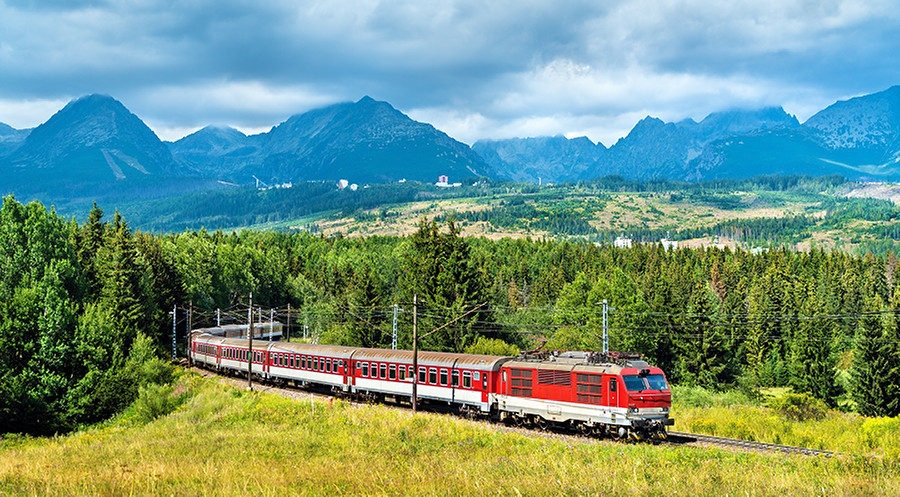Written By: Steven Coy, CTC, Office and Textbook Manager – The Travel Institute
There is no better way to learn about a product or destination than to experience it yourself, but we know it’s hard to be everywhere. That’s why FAM reports by colleagues are absolutely wonderful. One of The Travel Institute’s own family members recently experienced the joys of train travel in the American West and wanted to share his tips. This is the first in a two-part series.
DISCLAIMER: I enjoy transportation. I think planes are amazing, ships are a wonder, and “There is just something about a train…” I am THAT person … the one who really doesn’t mind flight delays and is the one who is fine with a three-hour layover provided he can build a “nest” in front of a window facing the busy part of the tarmac. The same person who will fly to Miami or Fort
Lauderdale a day early, not for the South Florida fun, but to have a ring-side seat to watch the ships depart. Knowing this, please enjoy the following:
Extended train travel isn’t something most travelers seek out. Most casual travelers see trains as either a necessary evil (commuting to work) or something to do as part of a sightseeing excursion (think White Pass/Yukon Railway in Alaska, or the wonderful routes throughout Europe – especially Switzerland). But train travel does offer an amazing way to slow down and enjoy getting to the destination, all while providing a view to things often sped by on the highway or skipped over by plane.
My Amtrak experience has been either the Metroliner or Acela service up and down the Northeast Corridor of the United States. Before committing to a much longer circumnavigation of the country, I figured I better start “training” and chose the Coast Starlight from Los Angeles to Seattle. I had been out west for a meeting, and it was easy to connect with the train in Los Angeles from a regional train from San Diego.
Much like Penn Station in New York, Los Angeles’ Union Station also is the hub for the city’s light rail service, in addition to both the regional and long-distance Amtrak service. The grandeur of the arrivals lounge harkens back to a time when train travel was the only game in town. Everyone boarded the train based on the location of his or her accommodations or seating. Every carriage of the train has its own attendant, and, at least on this shorter voyage, our attendant, Cruz, was with us from Los Angeles to Seattle. The conductors changed over different stretches of the trip, but the attendant was the same. Very much like a steward on a ship, Cruz functioned as the Amtrak host, helping passengers on/off at their proper stops, keeping everyone informed of any changes and being there to convert the room from daytime use to nighttime use.
SALES NOTE: While the trains west of the Mississippi are predominately bi-level, they are still the width of a normal train. If you have been on a train to commute or have taken the Alaska Railroad on any of its segments from Fairbanks to Seward, you know how wide the cars themselves are – now fit in accommodations. Yep, it is tight, and when selling a customer on a train trip … keep that in mind.
Being 6’5” tall and having done my research on Amtrak.com about sleeping compartment sizes, I chose to err on the side of bigger and treated myself to a Bedroom rather than the more plentiful Roomettes. The bedroom had access to a private lavatory (don’t get too excited, it is the size of those spacious airline restrooms) and offered the opportunity of showering, too, as well as providing a sink.
At night, Cruz, the super carriage attendant, converted the sofa to become the bed perpendicular to the window, so I was able to stretch way out. During the day, I could use the sofa to relax and enjoy the view. If I had chosen the Roomette, the room would have been a little larger than the size of two single seats facing each other. When converted for nighttime, the seats recline making one bed and there was a pull-down bunk for the second passenger.
SALES NOTE: Be familiar with the information on Amtrak.com and your Amtrak sales training regarding accommodations if your customers choose this type of travel. Understanding accommodation sizes and customer sizes will help match them to the proper rooms for their experience. DO NOT be afraid to choose the larger accommodations; while the cost does seem higher to the customers, they will appreciate the comfort once onboard.
Most accommodations on the bi-level coaches are on the second level (narrow stairway to navigate), but for those with mobility issues, each coach has an accessible room on the bottom level. Restrooms and showers are on the lower level. Again, think airplane “cozy,” but the shower room does have an adjoining changing area, which is nice. All rooms have picture windows to help bring in the views, but there also is an Observation Car where snacks, drinks and panoramic views await. People tend to “camp-out” in the Observation Car, so it pays to get there early, especially if you anticipate a particularly scenic stretch of track. I can only imagine how crowded it must get on routes that cross the Rockies.
For those not needing or wanting sleeping accommodations, coach and/or business class seating is available for a more communal experience. The seats are comfortable, and they will be assigned. So, if a shorter segment of a longer trip is planned, this is a viable option. It also is a cost-effective way to travel.
We hope you enjoyed this story on accommodations train travel can offer. Stay tuned because next week we will feature dining on the Coast Starlight.
For further learning, enroll in The Travel Institute’s North America destination course.



